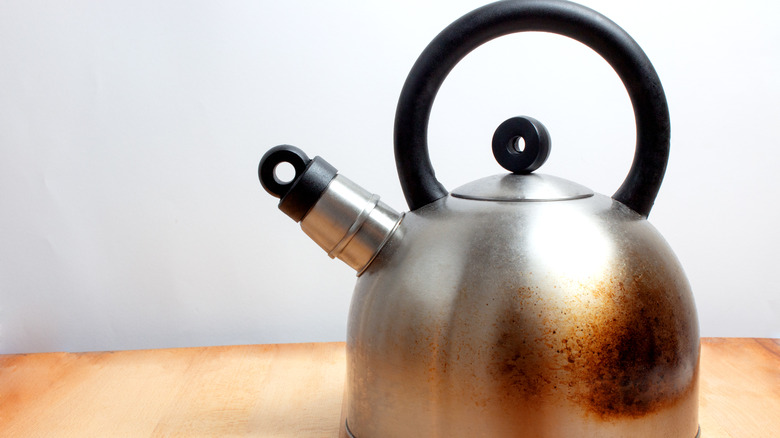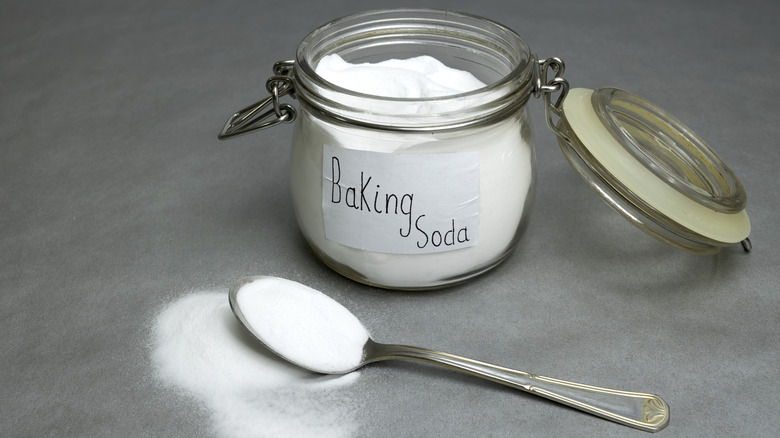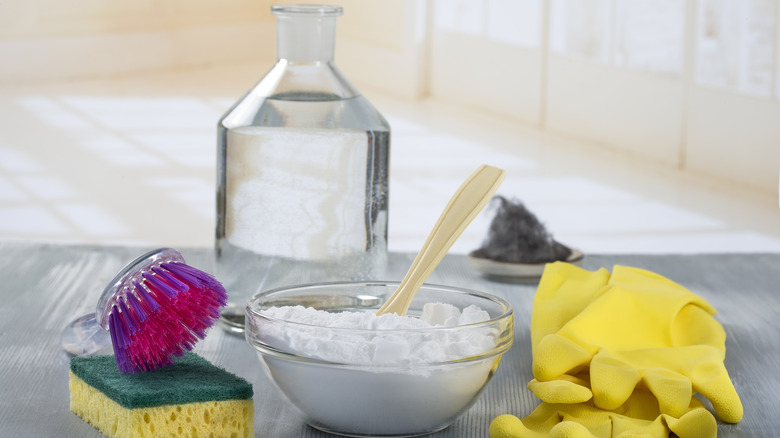The Pantry Staple You Need To Clean Stubborn, Burnt Tea Kettles
Burn marks on a tea kettle are total eye sores. The pesky brown stains always seem to pop up unannounced — proudly making themselves at home on the bottom of your favorite teapot for all to see. The scorched streaks are irksome, to say the least — enough to make anyone wish that Mr. Clean himself would burst through the kitchen door with a grime-fighting magic eraser in hand to save the day.
The bad news is that'll likely never happen. But, the good news is that the secret weapon for removing those unsightly blemishes is probably already stocked in your pantry. That's right, you can easily tackle these stains with the power of one simple ingredient: baking soda.
While a lemon might be all you need to descale a kettle, when it comes to de-burning the outside, baking soda is the answer. Not only is it an easy, inexpensive, and non-toxic method for ridding those dreadful burns, but it's also incredibly effective — with no Herculean strength for scrubbing necessary.
Use baking soda for extra scrubbing power
You can return your tea kettle to its original glory with the help of sodium bicarbonate. A trusted kitchen ingredient, it's often used as a leavening agent in baked goods like bread and muffins to help them rise. But, the innocuous white crystalline powder is also an exceptional cleaning agent thanks to its natural alkaline characteristics and mild abrasive properties.
When it comes to alkalinity, it's a trait that refers to substances that fall on the opposite end of the spectrum from acidity, with both being measurements that are represented in pH levels. Foods and kitchen staples can sit at both ends of the spectrum, and both can be good cleaning tools, but with very different purposes.
In a nutshell, acidic cleaners like lemon-infused sprays are good at neutralizing alkaline residue, such as mineral deposits like limestone. On the other hand, alkaline cleaners like baking soda are great for neutralizing acidic residue like grease, fat, and oil. And, since these three are generally the cause of those ghastly kettle marks, the humble baking soda is a powerful foe against the charred remnants.
Create a baking soda solution to tackle burned-on grease
You can easily whip up a non-toxic scrubbing solution for stubborn teapot stains using only two ingredients: baking soda and water. Simply combine a suggested ratio of 1 cup powder with 1/3-cup water and lather it on the bottom of the pot. Let the thick paste sit for a few hours to work its magic, and then scrub off the residue using a scouring pad or soft-bristled brush. Still in need of a stronger cleaning concoction? Baking soda also can be combined with an acidic solution like vinegar to really go the distance. Just add a few drops of vinegar into the paste and you're ready to scrub with more power.
Depending on how often a teapot is used, it should be deep cleaned every few months. When cleaning day rolls around, just be sure to prepare your kettle for its baking soda rubdown by soaking it in hot water first, along with a few drops of dish detergent, for about 20 to 30 minutes. This will make it easier to remove any deposits so you can bid farewell to unruly burns once and for all.



